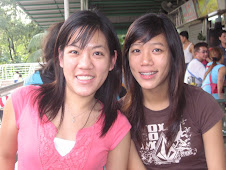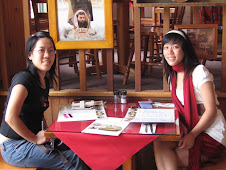





























i was very sure that i had entered the correct toilet. still, i was taken aback when i saw this young woman in the men's toilet. she was holding onto this feeble old man who walked with the aid of a walking stick.
i proceeded to do my business at one of the urinals with my back turned towards them. another person who came in after me decided, out of modesty, to use one of the cubicles.
wonder if the maid had to help the man unzip his fly since he was so weak as to require the assistance of the maid in the toilet.
getting into the wrong toilet is not an uncommon experience. it happens to all of us. sometimes ladies go mistakenly into a gent's toilet and vice versa. i remember a lady colleague of mine who made this kind of mistake. when she told us about it, we asked if she had seen 'the firing range' in the gents. she said she did but went ahead to use it anyway as there was no one inside.
i have entered a wrong sex toilet more than once. the moment i realised my mistake, i would make a quick exit. but there was one instance when i realised the mistake only after i had finished using the toilet.



today, i parked my car outside the moe dairy farm adventure camp - the only moe camp of which i have not seen the inside - and walked the disused road. sometimes, i think, i tread without realizing the danger i may be getting myself into.
just like the kranji nature trail, this road was totally deserted. i did not meet a single soul along the entire walk. the walk took me to a disused granite quarry. the quarry was fenced up and the gate was padlocked. there were certain areas where the water appeared to be quite shallow.
however, it is quite difficult to tell just by looking. concrete steps and slopes have been constructed just outside the fence. i think this is to facilitate water overflowing from the pond. the water would cascade down the steps and flow down the slopes to the drains.
i took a different route to get back to the dairy farm campsite. i walked alongside the railway track and managed to get to railway mall.
since then i have gone back to this disused quarry a few times. i found out that the name for it is the singaore quarry. at the moment, some development is taking place here as the singapore quarry will become part of the dairy farm nature park. a platform is being built over the edge of the quarry pond.



















